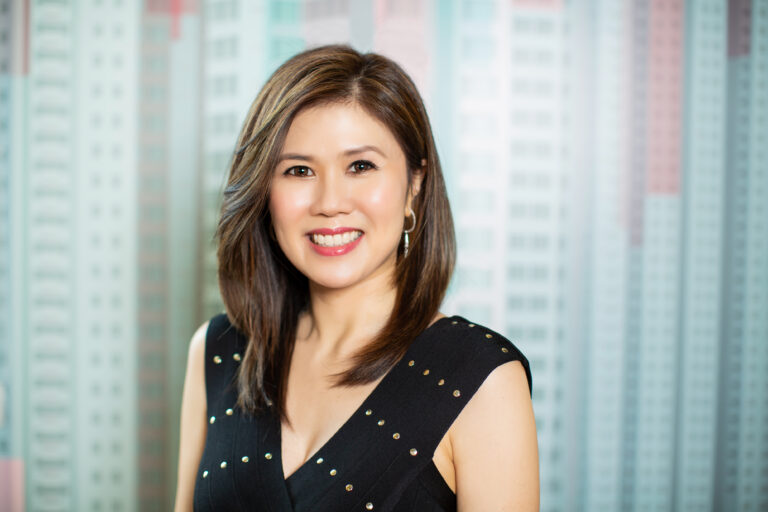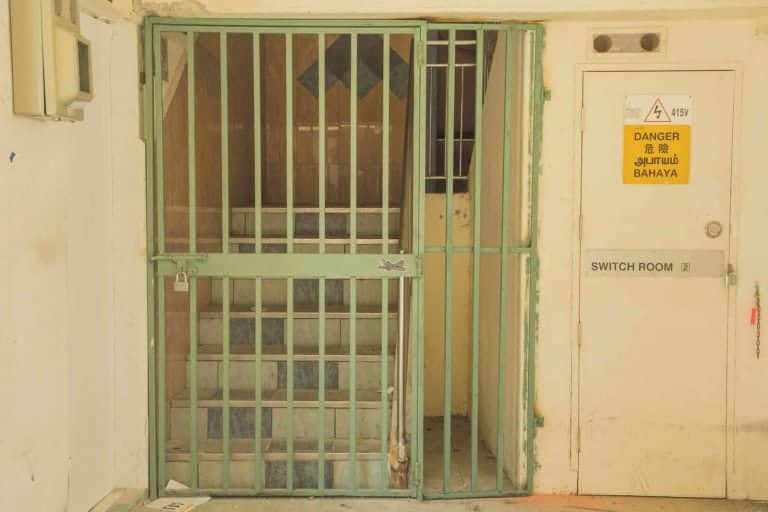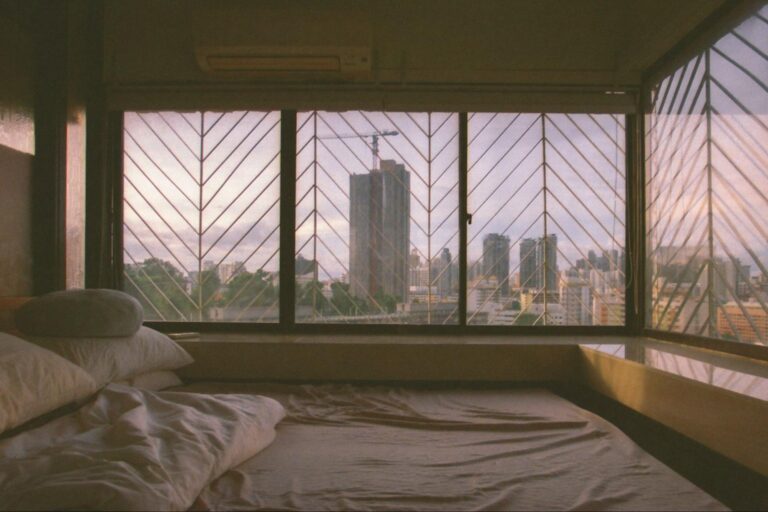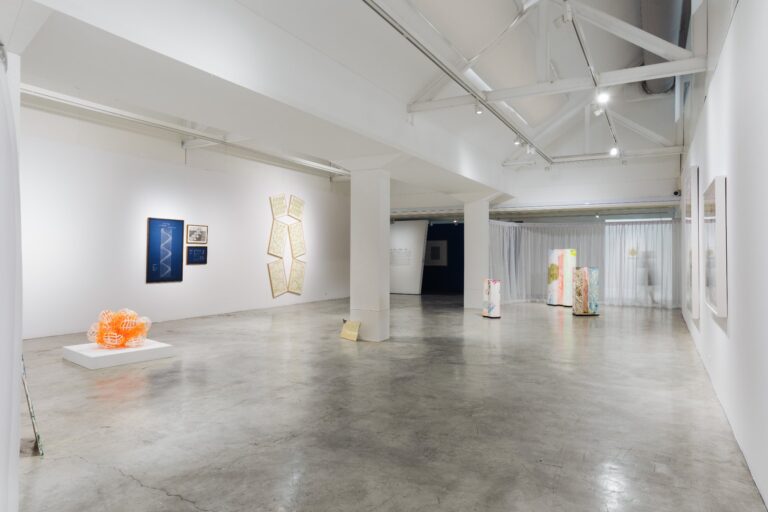Rabindranath Tagore, West Bengal poet and Nobel laureate is well-known the world over for his artistic accomplishments, and so it is perhaps surprising that a sleepy industrial estate tucked away in Singapore’s Upper Thomson should bear his name. Tagore Lane and Tagore Drive are not exactly places you’d visit for a random jaunt around the neighbourhood unless you were in search of specific hardware or wholesale plants.

And yet, look more closely and you’ll find not just one such space but two!
Starch, brainchild of Moses Tan opened in 2021 to rave reviews and down the road, you’ll find The Supper House founded in 2020 by interior designer Ashley Chiam. Chiam’s latest art presentation — only his second curatorial venture, and the third art show at The Supper House — features a mix of fashion and works by both international and local artists. It’s a kooky mix and at first blush comes across as a bit frenetic in its multi-genre approach. There is visual art here, fashion, interesting design and even a specially commissioned ambient scent by Cherine Wee named Time Flows in Strange Ways. (To be honest, it’s a bit of a challenge to appreciate the full aroma with face masks on, but Chiam’s dedication to providing a multi-sensorial experience comes through quite effectively when the surprising bit of wall text appears, prompting visitors to see if they can detect the scent.)
Step into the space and you’ll first be confronted with mannequins dressed in Commes des Garcon (CDG), juxtaposed against a teamlab video work featuring floating flowers, and other CDG outfits flattened out and splayed across wooden frames like paper cut-outs. As you move further into the room, you’ll find a larger display of outfits (fourteen in total), pieced together from private collectors.

The juxtaposition of the fashion pieces against teamlab’s art has a lovely transcendental effect as one enters The Supper House space — it’s almost like walking into a carnival funhouse tunnel while being immediately confronted by the inherent contradictions of high fashion. As Chiam explains,
“The (CDG) collection that I have here obscures the whole body, (showing that) there is no single template for beauty. We all come in different shapes and sizes.”
The exhibition considers the notion of flatness and ties it into that famous bit of historical fake news that the “world is flat.” The show’s title The World Is Flat After All immediately evokes the very real contemporary concerns about the spreading of misinformation and the sinister pervasiveness of data mining in this (sometimes rather terrifying) digital age.
We particularly loved the way Chiam has snuck emerging and established local artists into every segment of the exhibition. Tucked away in a quiet corner at the start of the presentation is recent LASALLE fine arts graduate Dylan Chan’s A Gentle Whisper, between spaces, a subtle rumination on the interstitial places that we occupy as objects and bodies in space and time.
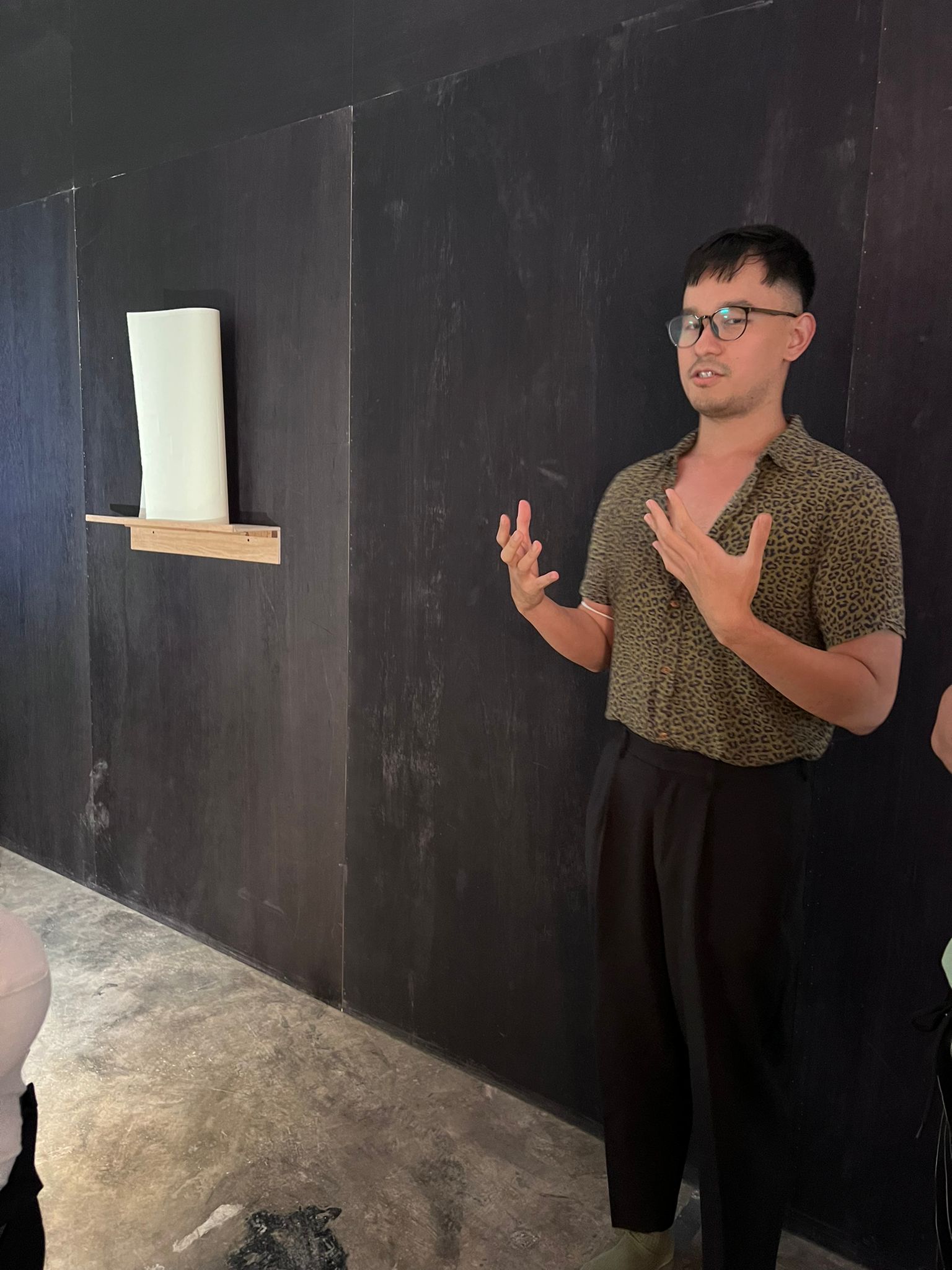
Further in, we see Hazel Lim’s Squaring the Circles, a series of meticulous and laboriously produced tapestries, which are juxtaposed against Takashi Murakami’s lithograph Flower Ball (Multicolour).


As Chiam explains, one work is a famous print of which many copies were made (Murakami’s), whereas the other is a far more unique but lesser-known work, painstakingly crafted by a local artist (Lim’s). While Murakami drew inspiration for this motif (now “featured everywhere from the Palace of Versailles to Vans sneakers”) from the act of buying flowers for his students, Lim references the notational symbols used in craft instructional books, raising important questions about whether these functional images can be regarded themselves as “a form of drawing with aesthetic value.”
In contrast to the rather more grandiose (but arguably more impersonal) Murakami experience, Lim is present and available to elucidate further that her work is inspired by domestic and home hobbyist crafts, made with much care and often by women whose labour is usually overlooked.
As Lim explains,
“These considerations reflect on the idea of hierarchies and what one considers to be important and hopefully draws attention to the once-marginalised, and on elements of labour and care.”
The interconnectedness of the modern world results in a flattening of access to both types of work by art collectors, but the steep difference in their respective price points prompts questions about how we value art. Is something that’s more expensive, always better? It’s an effective contrast that manages to avoid being either overly abstract or overly obvious. Art here is placed carefully but the show does not take itself too seriously. A lampshade might obscure a work from certain angles, or you might have to squeeze past a piece of furniture to get through the space, but there is a sense of warmth and openness here that makes you feel like you’re visiting your very cool friend’s very cool house.
For those curious about the developmental aspect of things, it might interest you to know that the show is entirely privately funded, with no government support whatsoever. Ten collectors and personal friends of Chiam came together, loaning their objects for display in this quirky space.
Instagram sensation The Paper Empress by Chia Ching Kai is another work of note in this show. It’s the first physical presentation of this satirical “fictitious monarch set in a timeless era, with cultural influences from the Tang Dynasty of ancient China.” The display offers a literal look into her mind together with a pretty array of intricately made paper jewellery, laid flat on what feels like it could be a household dining table.

It’s impossible to tell if this layout is the practical result of a simple lack of exhibition space, or if it’s a considered curatorial comment on the way social media content is routinely ‘dished up’ to consumers in an endless torrent of newsfeeds and updates. Either way, we loved that the presentation provokes irreverent thoughts on both possibilities.
On the top floor of the industrial space is the work of another recent LASALLE fine arts graduate – Joanne Lim. Here, Lim takes on surveillance culture and the positioning of her work, high up on a staircase, allows viewers to absorb the artistic statement, while themselves surveying the entire exhibition from a different vantage point. There is a collection of four different works here, ranging from printed tomes to cardboard flat lays.

Creepy barnacle-like installations of surveillance cameras on the wall — It is a ”basic fact” most people want a safe and secure living environment and A Reply — are positioned deliberately so that visitors have no choice but to pass them on their way up the stairs. Here, visitors are invited to consider video footage from surveillance machinery, and the potentially sinister motivations that lie beneath its bland two-dimensional flatness on a screen.
These cameras are accompanied by True Consent, a sculptural work made of 11 books containing the privacy policies of apps found in the artist’s phone and fourteen pieces of Singapore legislation relating to data collection:

It brings into sharp focus “the amount of labour and difficulty” involved in the protection of one’s privacy and questions the notion of what it means to fully consent to the acceptance of these dense terms and conditions. Might we still be so quick to agree to these terms if presented with their true physical heft and volume?
Finally, it’s interesting to note that the fashion here is displayed on wooden pallets (coincidentally enough, similar to the current #SGFASHIONNOW presentation at the Asian Civilisations Museum (ACM)).

While the pallets at the ACM offer an eccentric contrast to the hallowed museum halls of the national institution, they feel different here. Here, they feel almost like a provocation, a challenge to the white cube and all that it stands for.
They add to the rough-and-tumble feel of things and create a sense of exuberant joyfulness. The exhibition is an Aladdin’s cave of delights, a collection of treasures that Chiam hopes visitors will immerse themselves in fully.
He quips, “There are no clocks and mirrors here. When you are having a good time you should not be self-conscious.”
The World Is Flat After All is a coming together of friends, art, fashion and fun — no more and no less. It’s inspiring on many levels — showing that one can find beauty and connectedness in all kinds of different art forms and that art can truly be found everywhere, not just in the closed-off homes of chi-chi collectors and cold institutional museums. While the exhibition may not necessarily be ‘high art’ in the traditional or more conventional sense of the phrase, it’s a great example of how wonderful things can happen when friends and creatives come together spontaneously in unusual spaces.
______________________________
The World Is Flat After All runs till 21 August and is open to the public from Fridays – Sundays from 12-6pm. Contact @supperhousesg for more details and if you do visit, see if you can get founder Ashley Chiam to give you a tour or introduction.







